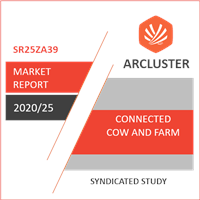Executive Summary
The world will face a major food crunch by 2050 if existing farms don’t modernize. With the population set to double over the next 30 years to 10 billion people, the demand for food will also follow the same trend. The limitations of arable land in the world will force the ecosystem to double the efficiency and productivity of the current farms.
While a small minority is researching into alternative forms of food in terms of protein and meal replacements, the traditional agriculture market will still play the majority role for addressing this food demand. Conventional forms of generating agricultural output will not be sufficient for address the global need. The interpolation of technology in agriculture at this critical phase is touted to be a game changer that will the future trends in agriculture.
Drones, aerial photography and big data is currently revolutionizing farming at the crop level. Combined with this is the advent of driverless tractors and machines that are significantly aiding farm production. In parallel, the technology industry is witnessing a major impetus towards the adoption of IoT at the industrial level. The most important thing to observe is that IoT is a largely services market, which makes it exceedingly suitable for industrial applications where companies can create and develop solutions that can be billed and are not reliant on consumer trends to gather momentum. In such a scenario, the evolution of IIoT for agriculture is the most important trend to watch in this space.
Connected cow and farm systems is built on IIoT where the data and intelligence flows back to the farmers. The heightened level of farm intelligence that will enable proper utilization of resources coupled with the increase in farm output will enable the farmer to significantly boost farm productivity.
The market opportunity for connected cow and farm systems across the globe is substantial and is at a critical juncture for mainstream market adoption. The intersection of highly sophisticated automation and M2M technologies combined with the rising popularity of IIoT in the space is set to disrupt the industry over the next decade. This market opportunity, built on the Internet of Cows and the next generation of farm systems, is set to become both conventional and in the majority. The proliferation of IIoT in the agriculture sector is a fresh and solid opportunity for service providers, equipment manufacturers, software vendors, value investors and stakeholders.
Arcluster forecasts this market to exceed $10 billion in revenues in 2021, growing from $1.27 billion in the current year.



